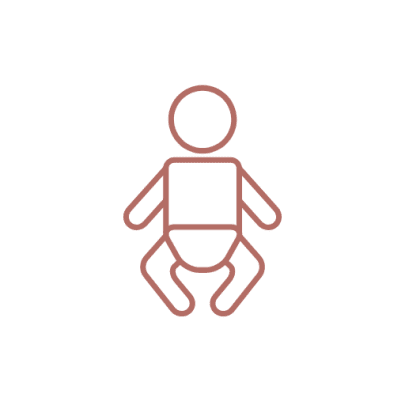Mastitis (ū kakā) is a common issue that affects many breastfeeding mothers, especially in the early weeks. It can come on quickly and make you feel unwell – but with the right care, it can usually be managed at home. Here’s what you need to know.
What Is Mastitis?
Mastitis is inflammation of the breast tissue. It may be caused by blocked milk flow, engorgement, or sometimes an infection. It’s most common in the first month of breastfeeding but can happen at any stage of lactation – especially if feeding patterns change or if you’re producing more milk than your baby needs (hyperlactation).
In 2022, the Academy of Breastfeeding Medicine updated their guidelines, describing mastitis as a spectrum – from mild inflammation to bacterial infection or even a breast abscess in severe cases. This means how mastitis is managed has changed too.
Common Symptoms of Mastitis
- A sore, tender, or lumpy area in the breast (often red and warm to the touch)
- Fever (temperature over 38.5°C)
- Chills, sweats, or flu-like symptoms (feeling tired, achy, or run-down)
- Swollen or painful breasts that may worsen quickly
What to Do if You Notice Symptoms
If you notice early signs of mastitis, take action quickly to reduce inflammation and prevent it from worsening.
Do:
- Keep breastfeeding or expressing – emptying the breast helps reduce swelling. Don’t stop feeding.
- Rest and hydrate – look after yourself and try to rest where you can.
- Use cold therapy – apply a wrapped ice pack (or frozen peas) for 10 minutes every 30 minutes to reduce swelling and pain.
- Take pain relief – paracetamol or ibuprofen can help manage symptoms and reduce inflammation.
- Try lymphatic drainage – gently stroke the breast from the nipple toward the armpit or collarbone using light pressure (like stroking a cat). Do this often, especially before feeding or pumping.
Avoid:
- Heat – unlike previous advice, heat is no longer recommended as it may worsen inflammation.
- Firm massage – deep massage can cause tissue damage. Stick to gentle, sweeping motions.
- Over-pumping or overfeeding – this may increase milk supply and worsen symptoms if overproduction is part of the problem.

When to Seek Help
Please see a healthcare provider if:
- Your symptoms don’t improve after 24 hours
- You have a fever above 38.5°C that doesn’t settle
- You feel worse, not better, over time
- You notice pus, discharge, or signs of a possible breast abscess
A doctor may prescribe antibiotics if a bacterial infection is present.
Support and Resources
If you’re unsure what to do or need help with breastfeeding, support is available:
- Talk to your midwife, GP, Plunket nurse, or Kaupapa Māori breastfeeding support
- Call PlunketLine on 0800 933 922 (24/7 breastfeeding advice)
- Ask for a referral to a lactation consultant, or find one via NZCLA (NZ Lactation Consultants Association)
- Contact La Leche League NZ or visit the Women’s Health Action website
Final Thoughts
Mastitis can be painful and distressing, but it’s usually manageable with early care and support. Don’t ignore symptoms. Continue feeding, rest when you can, and reach out for help.
You’re doing a great job – and you’re not alone.








